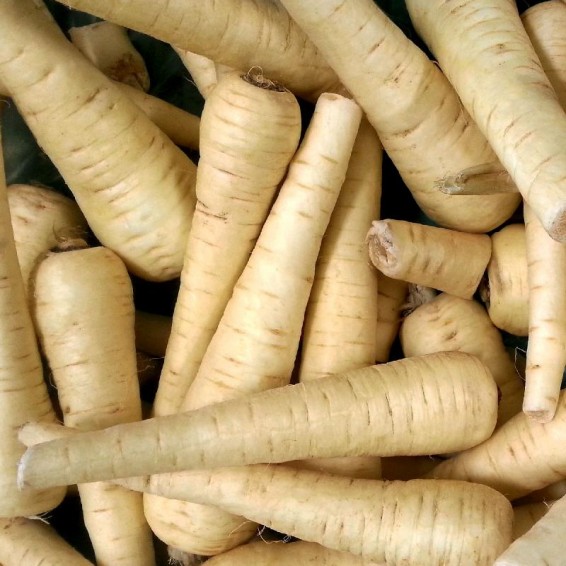All American Parsnip Seeds
- HOW TO GROW
- FAST FACTS
- REVIEWS
HOW TO GROW
Sowing: Two or three weeks before the last frost of spring, soak All American parsnip seeds overnight and then direct sow them 1/2" deep and 4" apart in rows 18" apart. The earth should be deeply worked with good drainage. Germination for parsnips can be very slow and irregular, so don't expect sprouting for at least three weeks. Keep the surface of the soil moist and soft, since the seedlings cannot break through a crust.
Growing: Apply a layer of mulch to conserve moisture and control weeds. Parsnips can handle some dryness, but should be watered in dry weather.
Harvesting: Because parsnips dramatically improve in flavor after a hard frost, the goal is to begin harvesting them after this occurs. Cover the plants with mulch over winter, and harvest them as needed all winter and into the spring. Keep in mind that the early growth of the tops in the spring will spoil the flavor, so they should be harvested before then.
Seed Saving: Parsnips must overwinter before producing seed. Because they survive cold very well, a layer of mulch should protect them in all but the coldest climates, where they should be dug and kept at 32-40 degrees and 90 percent humidity until spring replanting. Take care with the stems and leaves, since they have been known to cause serious rashes and skin irritation. Keep a close eye on the seed heads, picking them individually since they shatter soon after turning brown; parsnip seed can fly away easily since it is very small and light. Spread the heads out to dry in a protected location for a week or until they have completely dried, then thresh out the seed. Store All American parsnip seeds in a cool, dry place for no more than a year for best germination.
FAST FACTS
Latin Name: Pastinaca sativa
Type: Open Pollinated, Heirloom, Cool Season|Warm Season
USDA Zones: 3, 4, 5, 6, 7, 8, 9, 10, 11, 12
Seeds per Ounce: 10,000
Planting Method: Direct Sow
Sunlight: Full Sun
Height: 18 Inches
Color: White
Great side dish when sauteed
We love what grew and yes we let them over winter. The only issue I have is improving the germination rate and that is on me.
DESCRIPTION
HOW TO GROW
Sowing: Two or three weeks before the last frost of spring, soak All American parsnip seeds overnight and then direct sow them 1/2" deep and 4" apart in rows 18" apart. The earth should be deeply worked with good drainage. Germination for parsnips can be very slow and irregular, so don't expect sprouting for at least three weeks. Keep the surface of the soil moist and soft, since the seedlings cannot break through a crust.
Growing: Apply a layer of mulch to conserve moisture and control weeds. Parsnips can handle some dryness, but should be watered in dry weather.
Harvesting: Because parsnips dramatically improve in flavor after a hard frost, the goal is to begin harvesting them after this occurs. Cover the plants with mulch over winter, and harvest them as needed all winter and into the spring. Keep in mind that the early growth of the tops in the spring will spoil the flavor, so they should be harvested before then.
Seed Saving: Parsnips must overwinter before producing seed. Because they survive cold very well, a layer of mulch should protect them in all but the coldest climates, where they should be dug and kept at 32-40 degrees and 90 percent humidity until spring replanting. Take care with the stems and leaves, since they have been known to cause serious rashes and skin irritation. Keep a close eye on the seed heads, picking them individually since they shatter soon after turning brown; parsnip seed can fly away easily since it is very small and light. Spread the heads out to dry in a protected location for a week or until they have completely dried, then thresh out the seed. Store All American parsnip seeds in a cool, dry place for no more than a year for best germination.
FAST FACTS
Latin Name: Pastinaca sativa
Type: Open Pollinated, Heirloom, Cool Season|Warm Season
USDA Zones: 3, 4, 5, 6, 7, 8, 9, 10, 11, 12
Seeds per Ounce: 10,000
Planting Method: Direct Sow
Sunlight: Full Sun
Height: 18 Inches
Color: White
Reviews
Review
Great side dish when sauteed
We love what grew and yes we let them over winter. The only issue I have is improving the germination rate and that is on me.





